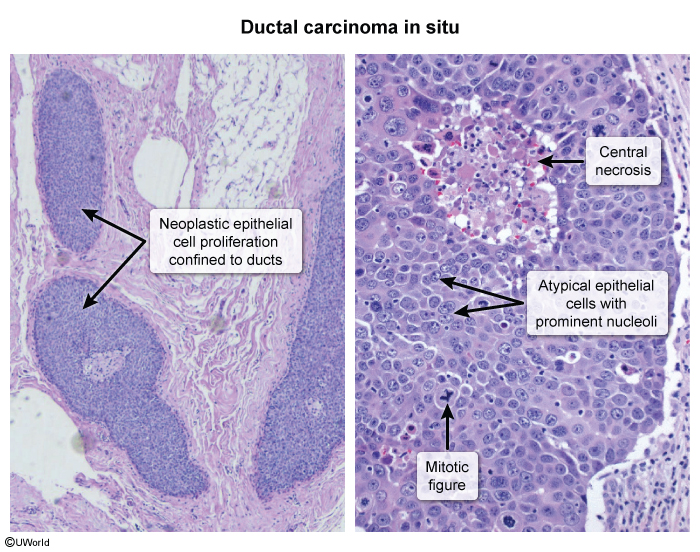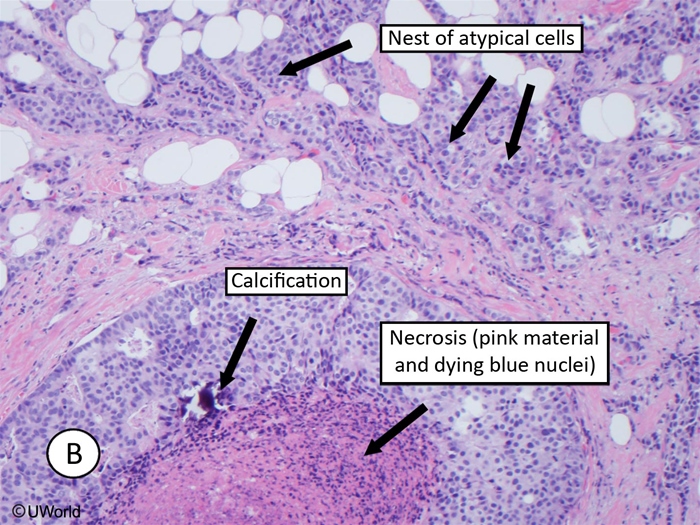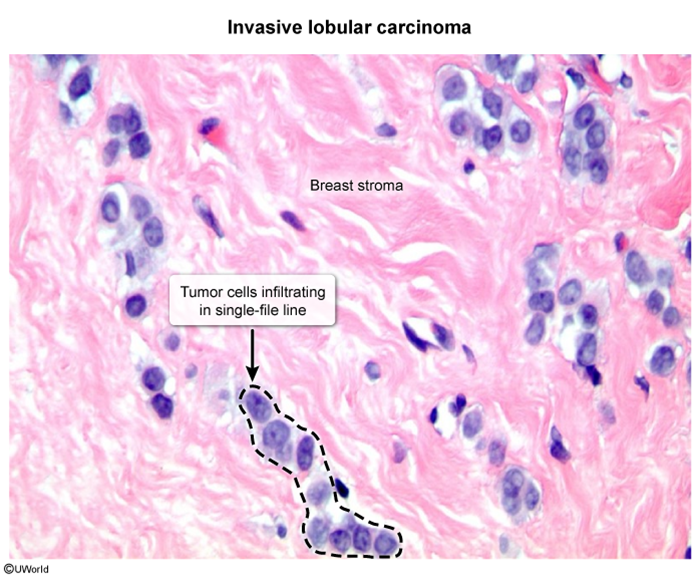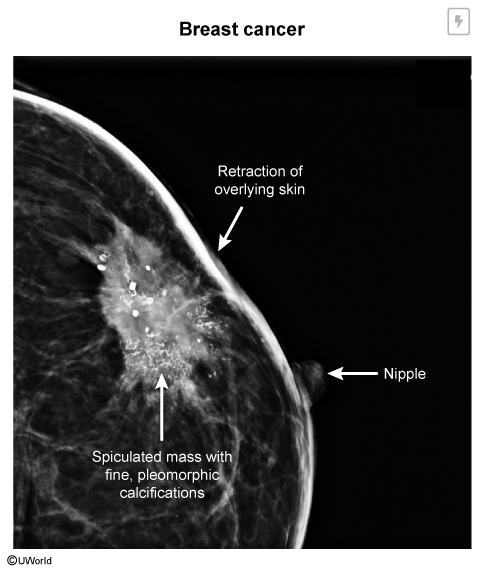Breast Cancer
Article Sections
Introduction
Breast cancer is the most common cancer in women worldwide and a leading cause of cancer-related mortality. Although both men and women can develop breast cancer, it is far more common in women. Early detection through screening and advancements in treatment have significantly improved survival rates.
Pathogenesis
Breast cancer develops through a multistep process driven by a combination of genetic mutations and environmental and hormonal factors. Key genetic changes in breast cancer involve mutations in tumor suppressor genes such as BRCA1, BRCA2, TP53, and PTEN, as well as in oncogenes such as HER2 (human epidermal growth factor receptor 2). These mutations lead to disruptions in cell cycle regulation, apoptosis, and DNA repair, contributing to uncontrolled cellular growth and proliferation.
Epidemiology and risk factors
Continue Learning with UWorld
Get the full Breast Cancer article plus rich visuals, real-world cases, and in-depth insights from medical experts, all available through the UWorld Medical Library.
Figures
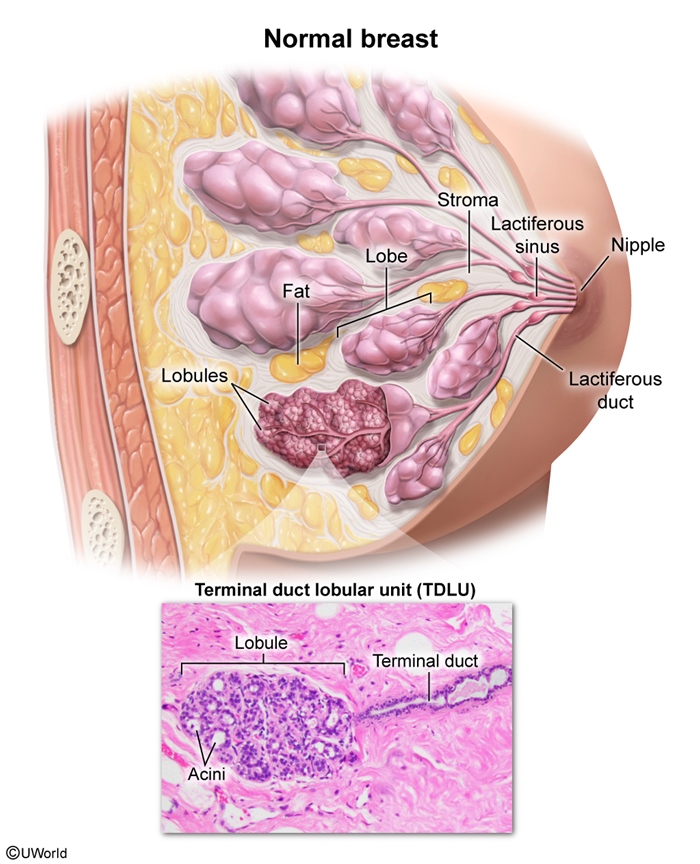
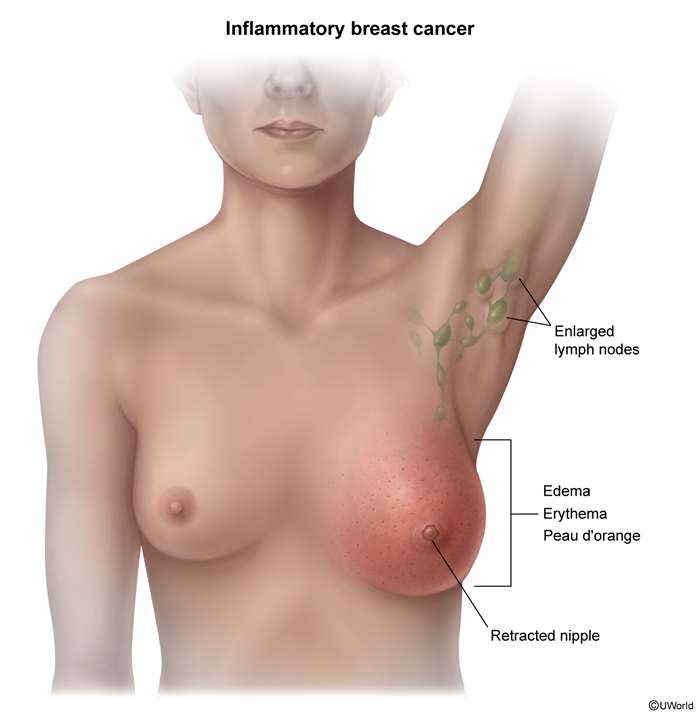
Images
